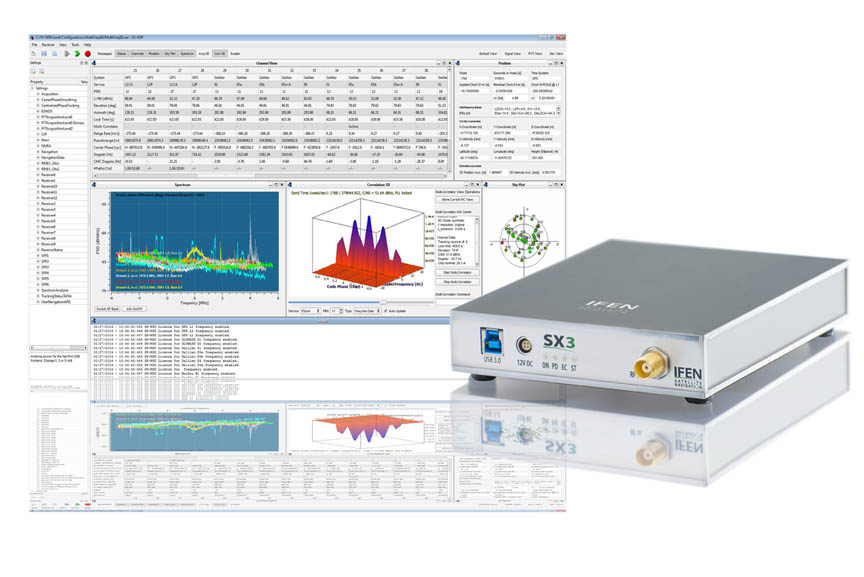 IFEN SX3
IFEN SX3IFEN introduced its new SX3 GNSS software receiver, a major upgrade of the company’s SX-NSR, last week at the ION GNSS+ conference in Tampa, Florida. Redesigned hardware frontends feature four wideband RF frequency bands that can be split into a maximum of eight sub-bands per unit. At the same time the bandwidth has been expanded to a full 55 megahertz, offering additional signal power especially in the Galileo E5 band.
IFEN introduced its new SX3 GNSS software receiver, a major upgrade of the company’s SX-NSR, last week at the ION GNSS+ conference in Tampa, Florida. Redesigned hardware frontends feature four wideband RF frequency bands that can be split into a maximum of eight sub-bands per unit. At the same time the bandwidth has been expanded to a full 55 megahertz, offering additional signal power especially in the Galileo E5 band.
A new USB 3.0 port of the frontend empowers a data transfer rate that makes possible a maximal bit-quantization of up to eight bits for every single stream. The additional power is compressed into a significantly smaller and lighter hardware chassis than before, according to IFEN. Among other options, a dual antenna-input feature can be ordered as well as an OCXO-clock. (Standard equipment of the SX3 GNSS software receiver is a precise temperature-controlled oscillator.)
Among others, the newly released software version offers following new features: interference mitigation algorithms (continuous wave mitigation, pulse blanking), new module controlled data recorder, new configurations (e.g., "MonitoringReceivers,” "AntiJam,” "ControlledRecorder"), and new application programming interface (API) examples. As with its predecessor, the SX3 is also able to act as a framework for customers’ own signal processing algorithms and serves as a powerful tool for research and development.



